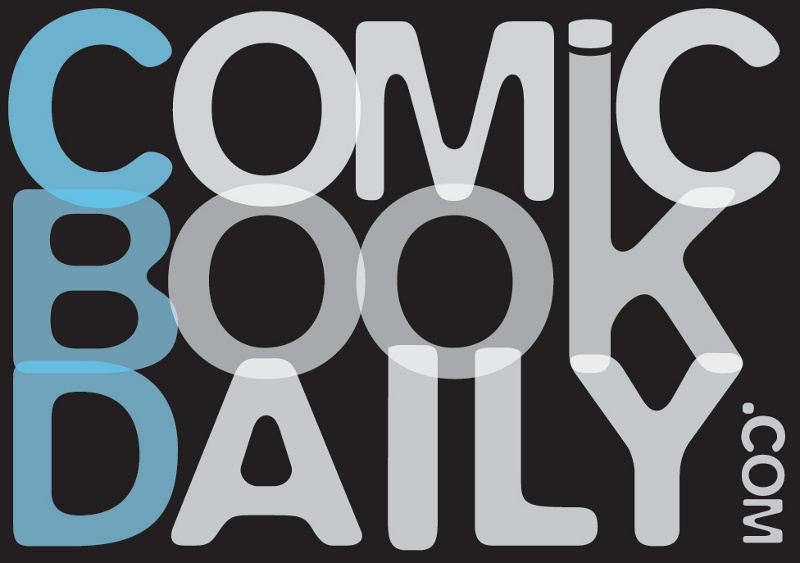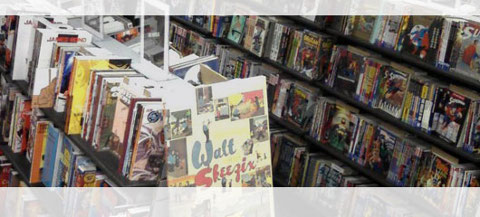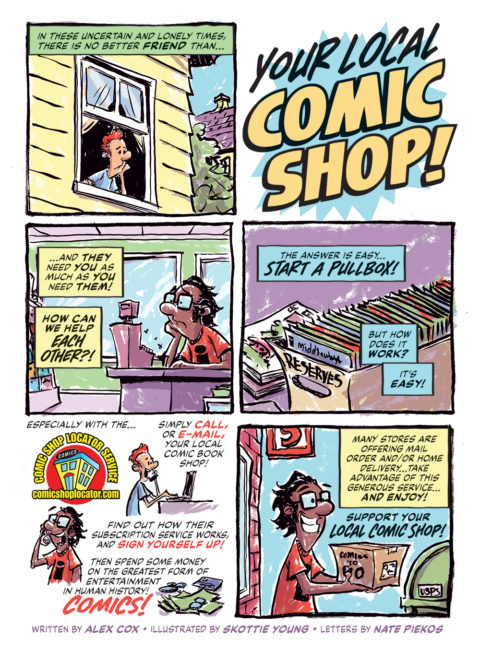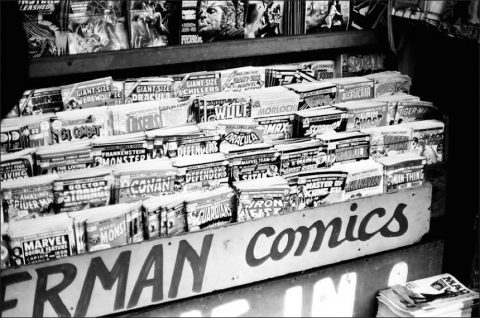I just read a wonderful article by retailer Brian Hibbs about selling trade paperbacks and collected editions. Give it a read and come right back…alright, let’s get into it. Is your local comic shop a bookstore selling mostly collected editions, or a newstand selling mostly weekly comic book periodicals. I found this quote to be of particular interest:
[quote]Now, I’m universalizing from my specific results, which is always an iffy thing to do, but go with it for a minute or two: although I see myself primarily as a “book store,” rather than a “periodical store” (and sales reflect that as well — we’re roughly 57/43% in favor of book format material), we don’t even bother to order a single copy of somewhere between one half and two thirds of the books offered to us for sale. This is because we’ve learned over the years that not every book published has a natural audience. I know: duh, right? But it really took us installing a Point-Of-Sale system for my eyes to really open up to how many books simply don’t turn in anything like a reasonable fashion. We liquidate hundreds of titles each year because they just don’t turn.[/quote]
My local comic shop now has a dedicated area that displays two weeks worth of trades; I’d love to see more but with so many on the market now it’s very difficult to show more than that. I think if you look at any successful comic shop they have racks and racks of books and a smaller area for new comics and back issues. The areas might be the same size but the books get the glory and prime positioning: where I shop the basement is filled with back issues while the main floor is books, toys and new periodicals.
They also have a liquidation area where I’ve picked up a lot of gems, garnering interest in other new material. I love paying less and they love selling more.
Hibbs goes on:
[quote]In fact, again for us, something like 15% of the book format titles we bring in each year never turn a single copy in twelve months! And, remember, we’re not ordering at least half of the books that are offered for sale. Conceptually, this could imply that a third or more of the book format titles offered for sale by publishers each year might not have anything approaching a viable national audience. Yes, I’m universalizing, and, yes, that’s bad, bad math, but I think this contention is generally bourn out by the sales charts I linked above: it only takes like 4-500 copies a month to make it into the Top 300 — by the time you get to the #1000 best-selling book each month in the DM, I’m confident that number is 100 copies or less a month. Among 1500-ish stores![/quote]
Until you look at the numbers we don’t realize how few hardcovers and trade paperbacks sell in any significant number. Fantagraphics and Humanoids, two publishers I’m particularly fond of, have a big hit if they move 1000 units; lots (most) sell below 500 copies. We indeed are part of a small reading community.
After finishing the article I immediately saw digital releases as the shining knight for all this collected material. Unfortunately it’s a catch 22: you have to know about the material in order to know you want to read it. As publishers ramp up their digital offerings all kinds of old material will be available, but the more they release the harder it will be to sort through it all.
And of course we can’t forget that old problem of price. DC just released Batgirl Year One in their digital store but want $1.99 per issue; for nine issues that’s $17.91 total. The softcover trade paperback of the series was $19.99 so there’s some savings there, but the sneak here is that it’s not available anymore. Instead of releasing a new print edition DC is going digital. Even more surprising was seeing Camelot 3000 for $1.99 each, $23.88 for all twelve issues. It’s been in paperback for $15 and deluxe for $35. Hmm.
The draw of the comic shop for me is still the brows-ability factor: wander through the aisles picking books up, giving them a good thumbing and discovering works new to you. Plus the recommendations of the staff go a long way when they know where your interests lie.





